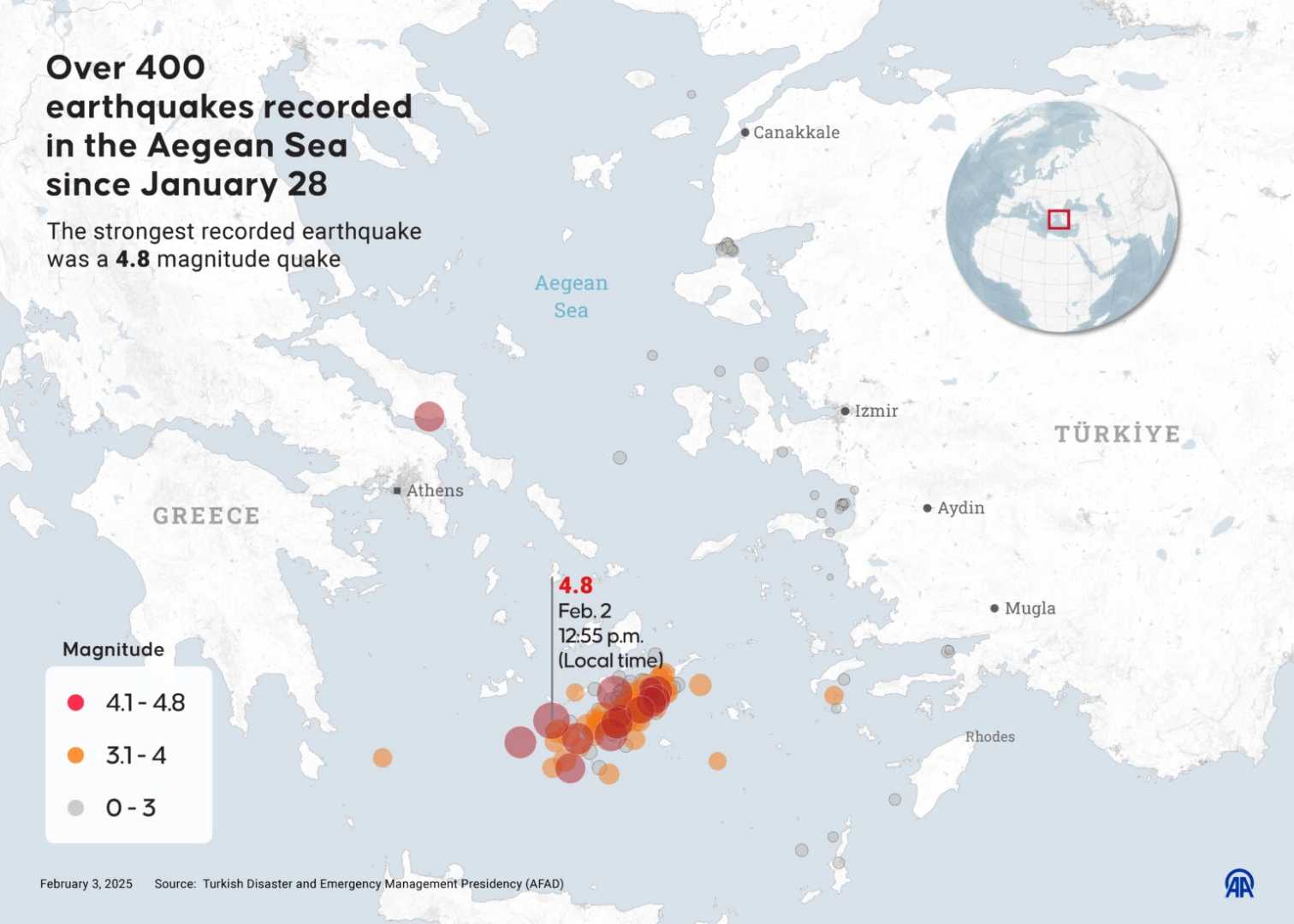News
Greece’s Santorini Island Shaken by Mysterious Earthquake Swarm

Santorini, Greece — A series of intense earthquakes has gripped Greece’s Aegean islands, particularly Santorini, Amorgos, and Anafi, leaving scientists baffled and prompting evacuations. The quakes, which began escalating in late January, have led to the closure of schools and a state of emergency, with over two-thirds of Santorini’s residents voluntarily leaving the island.
According to local authorities, the earthquakes have caused landslides and raised concerns about potential tsunamis and larger seismic events. Greek Prime Minister Kyriakos Mitsotakis urged calm, acknowledging the situation as ‘extremely perplexing.’ Researchers are struggling to identify the cause of the quakes, which appear unrelated to volcanic activity but are instead linked to complex tectonic processes.
‘It’s not clear to me why we have this repetitive sequence of earthquakes,’ said Dr. Robin George Andrews, a volcanologist at the University of Oxford. ‘It’s a real puzzle.’ The region’s geology, marked by overlapping tectonic plates and fault zones, complicates efforts to predict the situation’s outcome.
Dr. Emily Brodsky, a geophysicist at the Woods Hole Oceanographic Institution, noted, ‘There’s no reason for panic, but there is for sure reason for concern.’ The earthquakes are occurring along the Hellenic Trench, where the African tectonic plate is being pushed beneath the Aegean Sea plate, creating significant stress.
Historically, Santorini has experienced volcanic eruptions, most notably in 1560 B.C., which contributed to the downfall of the Minoan civilization. However, experts like Dr. David Pyle of the University of Oxford emphasize that the current seismic activity is distinct from volcanic processes. ‘The seismic activity evolves separately from the volcanic activity,’ said Dr. Maria Sakellariou, a submarine volcanologist at the National Oceanography Centre in Southampton.
While the earthquakes have not yet caused a volcanic eruption, the risk of a larger seismic event remains. Residents recall the devastating magnitude 7.7 earthquake in 1956 that killed 53 people and triggered a tsunami. Dr. Sakellariou warned, ‘The million-dollar question is whether the current tremors will lead to a similar event.’
Seismologists propose two scenarios: the first, more probable, is that the activity will gradually subside, while the second, less likely, is that it could culminate in a larger earthquake. As the situation evolves, authorities and scientists are closely monitoring the region, urging preparedness but cautioning against unnecessary alarm.












